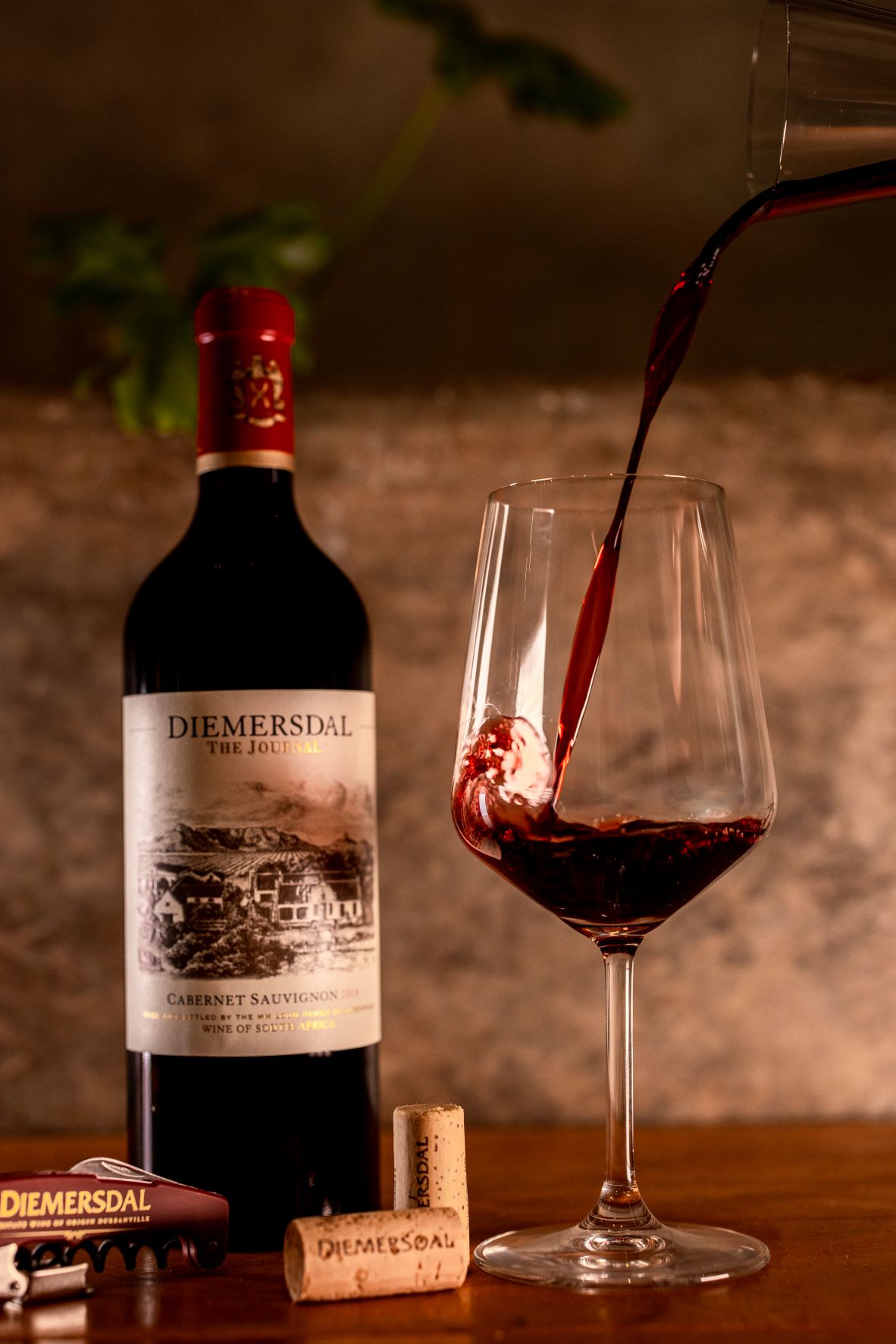The Journal Cabernet Sauvignon 2020, a wine in the premium offering of Diemersdal Estate in Durbanville, won one of only 28 Gold medals awarded in the South African section of this year’s International Wine and Spirits Competition (IWSC). This year’s judging of the IWSC’s Cape entries was done in South Africa, an ode to Johann Krige, co-owner of Kanonkop, who is this year’s IWSC chairman.
International wine judges, including Masters of Wine Alistair Cooper and Elizabeth Kelly, joined renowned Cape judges in making this year’s selections.
Thys Louw, owner-winemaker of Diemersdal Estate, said it was especially rewarding to receive a top-scoring Gold medal in the year that saw the South African leg of the IWSC judged on local shores. “One always hopes for a good showing when you are ‘playing’ at home,” says Louw, “especially as the competition was particularly stiff, with most of the Cape’s top wineries entering the IWSC. And to win one of only 28 Gold medals, and this in the strong category of South African Cabernet Sauvignon, is particularly satisfying.”
Known as an icon of South African Sauvignon Blanc, Diemersdal has over the past decade come to the fore as a leading awarded producer of red wines, especially Cabernet Sauvignon and Pinotage.
Louw, the sixth generation Louw to farm and make wine at Diemersdal, says the showing of Durbanville’s red wines on the international stage, such as the IWSC, is important to accentuate the fact that there is far more to the region than Sauvignon Blanc.
“Throughout Diemersdal’s history, which goes back to 1698, red varieties have played a profound role in creating our track-record and provenance,” says Louw. “Soils of decomposed granite with water-retaining clay and Durbanville’s proximity to the Atlantic Ocean creates terroir suitable for red grapes, as well as white. It is no coincidence that South Africa’s most highly regarded red wine, the GS Cabernet Sauvignon 1966, originated from Durbanville terroir.”
Diemersdal’s The Journal Cabernet Sauvignon 2020 is made from selected vineyards parcels on the estate, which is farmed without irrigation. “Dryland wine-farming is a part of Diemersdal DNA,” says Louw. “I believe one can only express terroir in its purity by allowing the vines to go through their annual cycle in total synch with that year’s weather patterns. This means water is added to the vines from the skies, not from a pump.”
After fermentation, the wine selected for The Journal Cabernet Sauvignon spends 22 months in new French barriques. “Quality, terroir-expressive Cabernet Sauvignon has more than enough muscle and body to stand-up to new wood,” says Louw. “The oak streamlines the tannins and gives the wine structure and mouth-feel bearing the characteristic classic Cabernet Sauvignon flavours of cassis, pine-needle and dark fruit. But in a good Cabernet Sauvignon I believe the wine’s appeal lies in the experience more than the taste. It is a grape with presence.”
Alistair Cooper MW, one of the international judges for this year’s IWSC, was especially impressed with the South African entries. “As a nation, South Africa has a bountiful array of varietals, there is so much opportunity for diversity it made for some exciting tastings. The judges were delighted by the wines on offer and the medal tally reflects this quality on offer,” he said.
“The rate at which South Africa has developed over the past 15 years is nothing short of astonishing. It is quite possibly the most dynamic wine-producing country in the world currently, with both classic styles continuing to be honed, as well as extremely exciting new projects. Producers are showing a much deeper understanding of which cultivars are suited to the Cape such as Rhone reds and whites and the classic Bordeaux varietals.”




